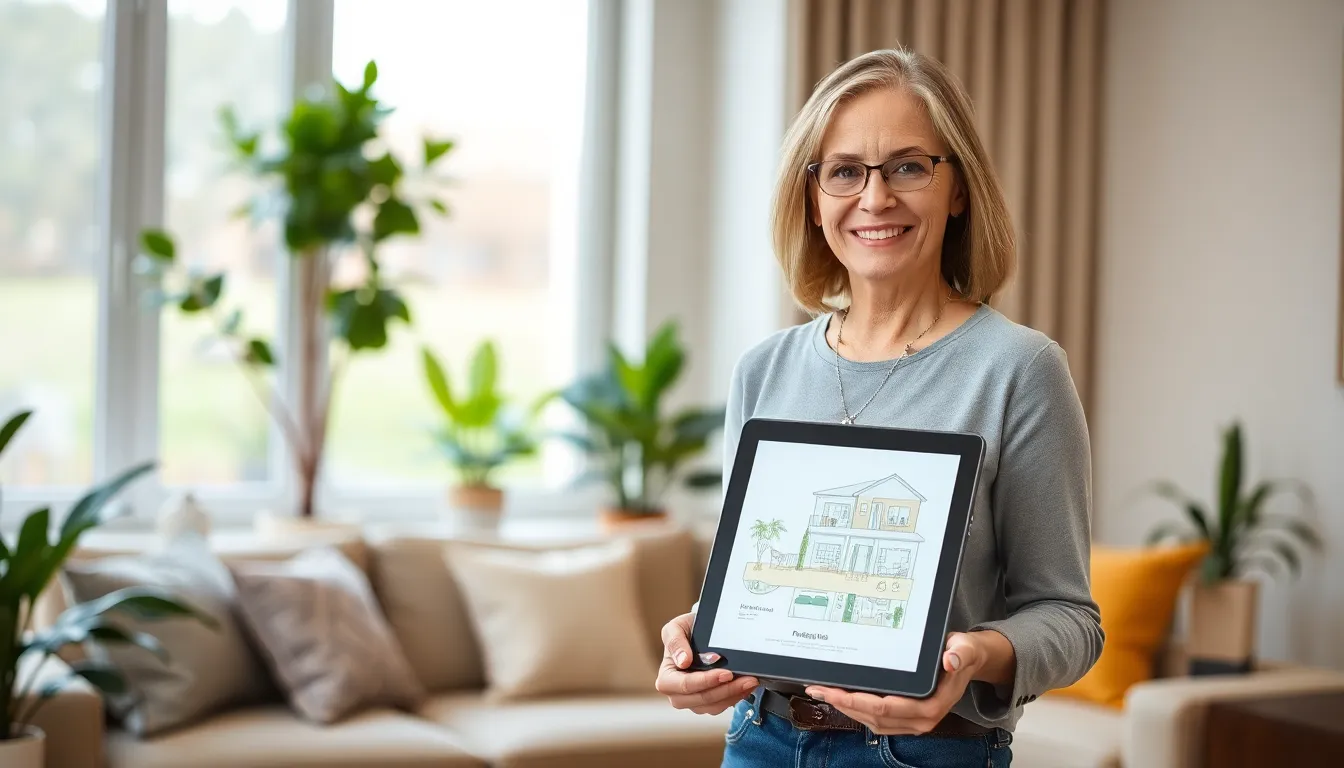Homeowners often find themselves in a dilemma. Their cozy abode feels a bit cramped, and the outdated kitchen could use a makeover. But here’s the twist: their home is a treasure chest of equity just waiting to be tapped. Imagine transforming that drab space into a dreamy retreat without breaking the bank.
Tapping into home equity isn’t just a financial strategy; it’s like finding a secret stash of cash in your couch cushions. With the right approach, homeowners can unlock funds to elevate their living spaces while adding value to their investment. Whether it’s a chic kitchen upgrade or a spa-like bathroom, the possibilities are endless. So, let’s dive into how to make that equity work for you, turning your house into the home of your dreams—all while keeping your finances in check.
Table of Contents
ToggleUnderstanding Home Equity
Home equity represents the portion of a property owned free and clear, serving as a valuable resource for homeowners looking to fund upgrades. Utilizing this equity can lead to significant home improvements and enhanced property value.
What Is Home Equity?
Home equity refers to the difference between a property’s current market value and the outstanding mortgage balance. For example, if a home is worth $400,000 and the mortgage balance is $250,000, the homeowner has $150,000 in equity. This value can increase through property appreciation or by paying down the mortgage. Accessing home equity for renovations allows homeowners to invest in essential upgrades while leveraging the asset they’ve built over time.
How Is Home Equity Calculated?
Calculating home equity involves two main steps. First, determine the home’s current market value through appraisals or online estimates. Second, subtract the remaining mortgage balance from this value. For instance, a home valued at $500,000 with a mortgage of $300,000 yields $200,000 in equity. Regularly assessing home value and mortgage balance helps homeowners understand available equity and plan for projects effectively. This calculation lays the foundation for making informed financial decisions regarding home improvements.
Tapping Equity for Home Upgrade
Tapping into home equity can provide homeowners with the necessary funds for upgrades. Options exist to access this valuable resource and boost property value.
Methods of Tapping Equity
Homeowners use various methods to tap into equity. A home equity loan allows borrowing against the home’s equity as a lump sum at a fixed rate. Another option, a home equity line of credit (HELOC), offers revolving credit for ongoing projects. Cash-out refinancing also serves as a method, where homeowners replace their existing mortgage with a larger one, receiving the difference in cash. Selling the property may also unlock equity if owners choose to purchase a new home.
Benefits of Tapping Equity
Tapping equity provides numerous advantages. Increased property value often results from renovations, boosting returns on investment. Home improvements can enhance comfort, functionality, and aesthetics. Flexibility in funding options means homeowners can select a method that aligns with their financial goals. Utilizing home equity also allows for potential tax benefits, as mortgage interest might be deductible. This financial strategy supports achieving a dream home while maintaining stability.
Risks to Consider
Homeowners should remain aware of potential risks when tapping into home equity for upgrades. Understanding these risks helps in making informed decisions.
Market Fluctuations
Market fluctuations can significantly impact property values. If a homeowner taps into equity during a market peak, the potential for decline exists. Property values can drop due to economic conditions, affecting both equity and future selling potential. If a home’s market value decreases, the financial cushion provided by equity shrinks. Staying updated on market trends ensures homeowners gauge their equity accurately before taking action.
Debt Considerations
Debt considerations play a crucial role when leveraging home equity. Taking on additional debt increases the financial burden, potentially putting strain on a homeowner’s budget. Home equity loans and HELOCs often come with variable interest rates, affecting monthly payments. Managing these debts requires careful planning and budgeting to avoid financial difficulties. It’s important to assess one’s ability to repay borrowed amounts to maintain overall financial health.
Planning Your Home Upgrade
Effective planning ensures a smooth home upgrade process. Evaluating budget constraints and selecting suitable improvements requires careful consideration.
Setting a Budget
Determine available home equity first. Understanding how much equity exists helps outline a budget for upgrades. Consider relevant expenses, including materials, labor, and permits, which can accumulate quickly. Allocate funds for unexpected costs, as projects often exceed initial estimates. Aim for a precise figure that balances desired improvements with financial realities. Homeowners may also seek professional advice to optimize budgeting strategies. Regularly revisiting and adjusting the budget maintains alignment with evolving goals.
Choosing the Right Improvements
Identify improvements that enhance living space and increase property value. Prioritize renovations such as kitchen and bathroom upgrades, recognized for high return on investment. Research current design trends and assess personal preferences, ensuring choices both modernize and satisfy needs. Exploring energy-efficient updates often offers long-term savings and sustainability. Each selected improvement should align with financial goals and enhance daily life. Evaluating potential impact on property value makes informed decisions easier and supports future financial stability.
Conclusion
Tapping into home equity offers homeowners a viable path to upgrading their living spaces while enhancing property value. By understanding their available equity and planning carefully, they can make informed decisions that align with their financial goals.
Investing in renovations like kitchen and bathroom upgrades not only improves comfort but can also lead to increased market value. However, it’s crucial to remain vigilant about potential risks and manage debt wisely. With the right approach and thorough planning, homeowners can successfully transform their homes into the ideal spaces they’ve always envisioned.







